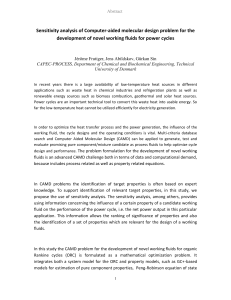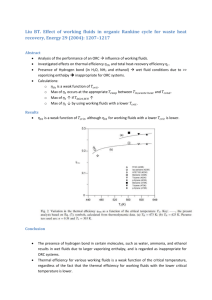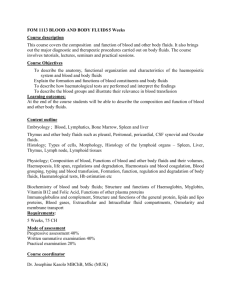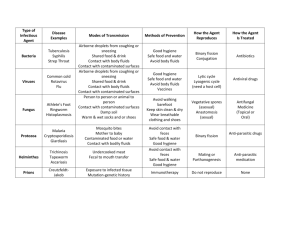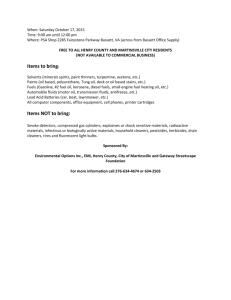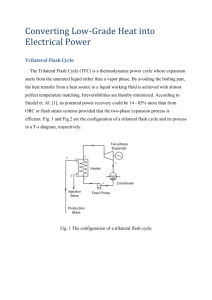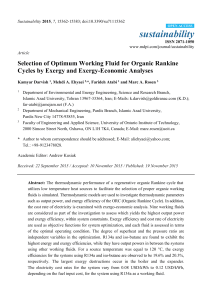Author final version (postprint)
advertisement
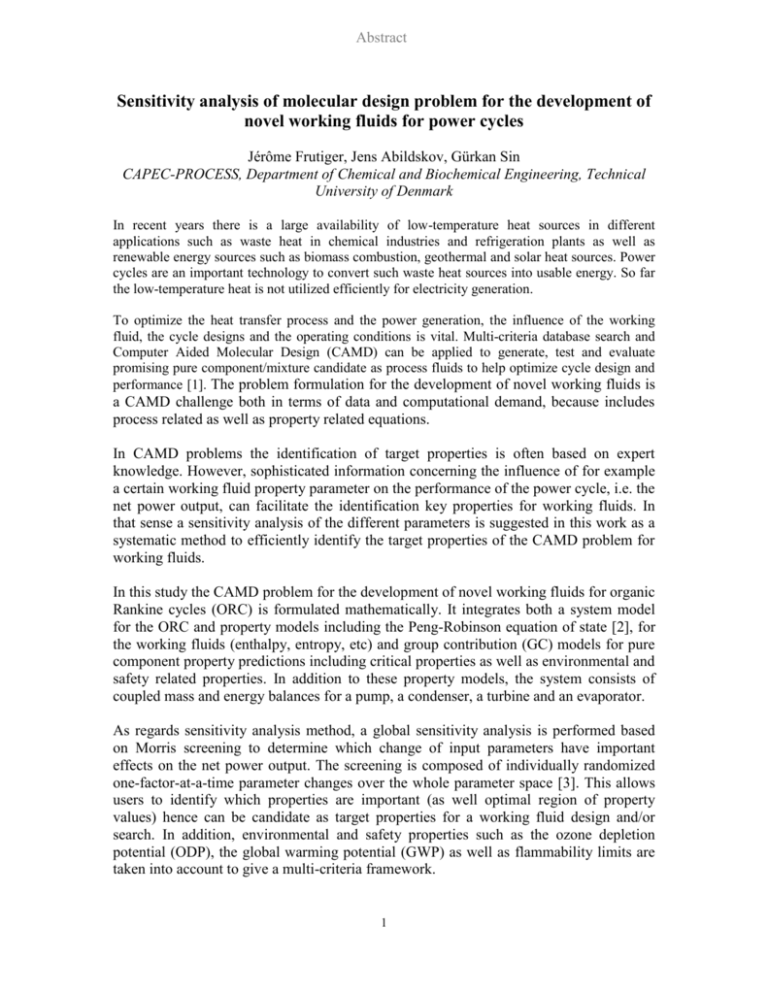
Abstract Sensitivity analysis of molecular design problem for the development of novel working fluids for power cycles Jérôme Frutiger, Jens Abildskov, Gürkan Sin CAPEC-PROCESS, Department of Chemical and Biochemical Engineering, Technical University of Denmark In recent years there is a large availability of low-temperature heat sources in different applications such as waste heat in chemical industries and refrigeration plants as well as renewable energy sources such as biomass combustion, geothermal and solar heat sources. Power cycles are an important technology to convert such waste heat sources into usable energy. So far the low-temperature heat is not utilized efficiently for electricity generation. To optimize the heat transfer process and the power generation, the influence of the working fluid, the cycle designs and the operating conditions is vital. Multi-criteria database search and Computer Aided Molecular Design (CAMD) can be applied to generate, test and evaluate promising pure component/mixture candidate as process fluids to help optimize cycle design and performance [1]. The problem formulation for the development of novel working fluids is a CAMD challenge both in terms of data and computational demand, because includes process related as well as property related equations. In CAMD problems the identification of target properties is often based on expert knowledge. However, sophisticated information concerning the influence of for example a certain working fluid property parameter on the performance of the power cycle, i.e. the net power output, can facilitate the identification key properties for working fluids. In that sense a sensitivity analysis of the different parameters is suggested in this work as a systematic method to efficiently identify the target properties of the CAMD problem for working fluids. In this study the CAMD problem for the development of novel working fluids for organic Rankine cycles (ORC) is formulated mathematically. It integrates both a system model for the ORC and property models including the Peng-Robinson equation of state [2], for the working fluids (enthalpy, entropy, etc) and group contribution (GC) models for pure component property predictions including critical properties as well as environmental and safety related properties. In addition to these property models, the system consists of coupled mass and energy balances for a pump, a condenser, a turbine and an evaporator. As regards sensitivity analysis method, a global sensitivity analysis is performed based on Morris screening to determine which change of input parameters have important effects on the net power output. The screening is composed of individually randomized one-factor-at-a-time parameter changes over the whole parameter space [3]. This allows users to identify which properties are important (as well optimal region of property values) hence can be candidate as target properties for a working fluid design and/or search. In addition, environmental and safety properties such as the ozone depletion potential (ODP), the global warming potential (GWP) as well as flammability limits are taken into account to give a multi-criteria framework. 1 Abstract Furthermore, a process optimization with respect to the properties is performed to identify the optimal property values for a given process set-up [4]. This in combination with the sensitivity analysis to specify systematically the boundaries for the cycle related target properties. This facilitates an efficient screening for the optimal pure components or mixture working fluids. The methodology will be applied in a case study of an Organic Rankine Cycle (ORC) with a low-temperature heat source. The heat source is a hot water stream from waste heat of a chemical site. Giving this pre-exquisite the method allows to identify the most favorable working fluid along with the corresponding optimal process conditions in order to get the highest possible power output. The study presents a new approach for the identification of target properties of CAMD problems based on sensitivity analysis and shows its application for the development of novel working fluids of organic Rankine cycles for low temperature heat sources. [1] A. I. Papadopoulos, M. Stijepovic, and P. Linke, “On the systematic design and selection of optimal working fluids for Organic Rankine Cycles,” Appl. Therm. Eng., vol. 30, no. 6–7, pp. 760–769, May 2010. [2] W. Liu, D. Meinel, C. Wieland, and H. Spliethoff, “Investigation of hydrofluoroolefins as potential working fluids in organic Rankine cycle for geothermal power generation,” Energy, vol. 67, pp. 106–116, 2014. [3] G. Sin, K. V. Gernaey, and A. Eliasson Lantz, “Good Modeling Practice for PAT Applications: Propagation of Input Uncertainty and Sensitivity Analysis,” Biotechnol. Prog., vol. 25, no. 4, pp. 1043–1053, 2009. [4] M. Lampe, M. Stavrou, J. Schilling, E. Sauer, J. Gross, and A. Bardow, “Computer-aided Molecular Design in the Continuous-Molecular Targeting Framework using Group-Contribution PC-SAFT,” Comput. Chem. Eng., 2015. 2
